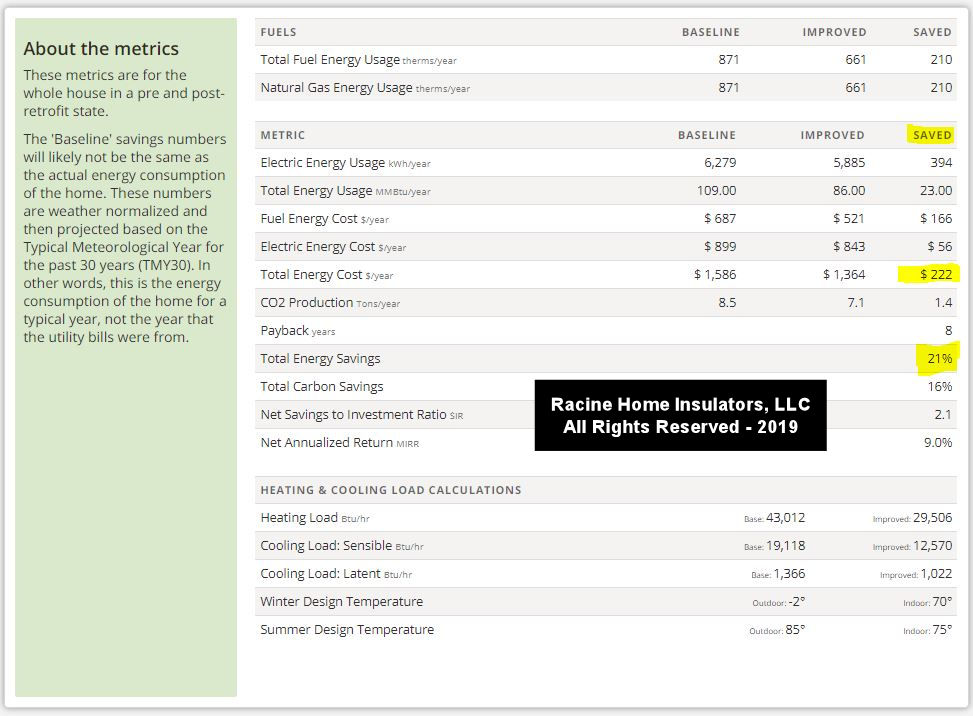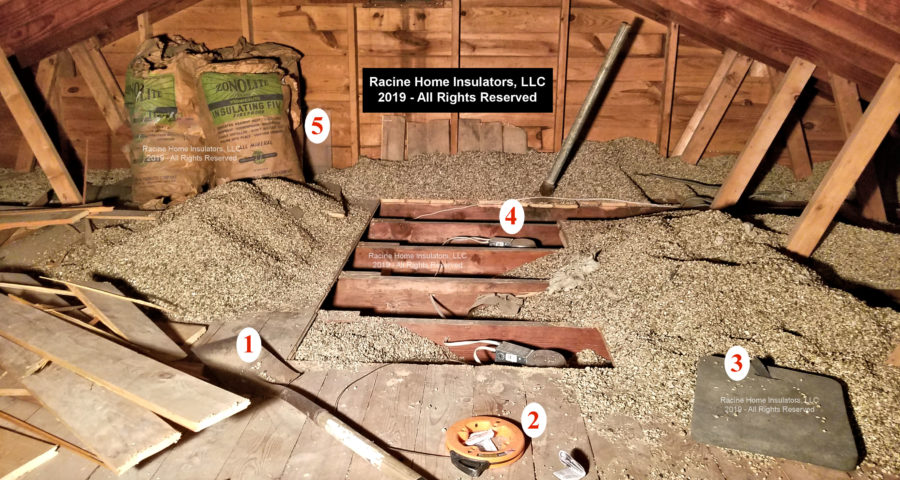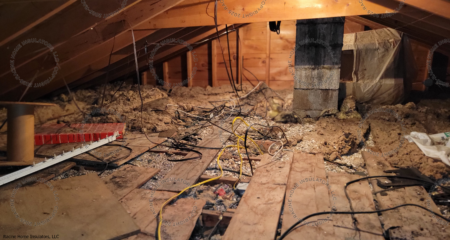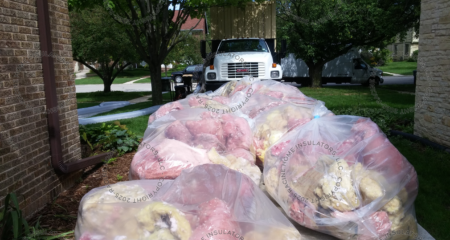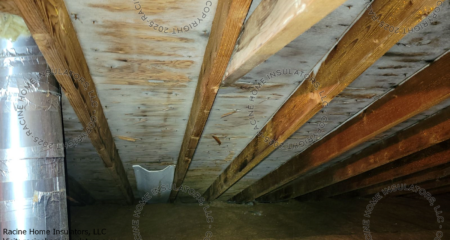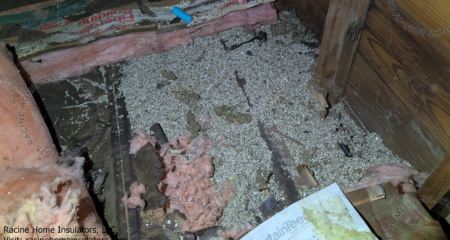Vermiculite insulation was a common type of attic insulation that was sold from the late 1920s up until the EPA shut down the Zonolite vermiculite mine in Libby Montana in 1990. The Zonolite mine, then owned by W.R. Grace, was responsible for 80% of the world’s vermiculite, and vermiculite insulation could be purchased locally and installed easily by either a homeowner or hired contractor. Unfortunately, almost all vermiculite insulation contains asbestos and is unsafe when disturbed.
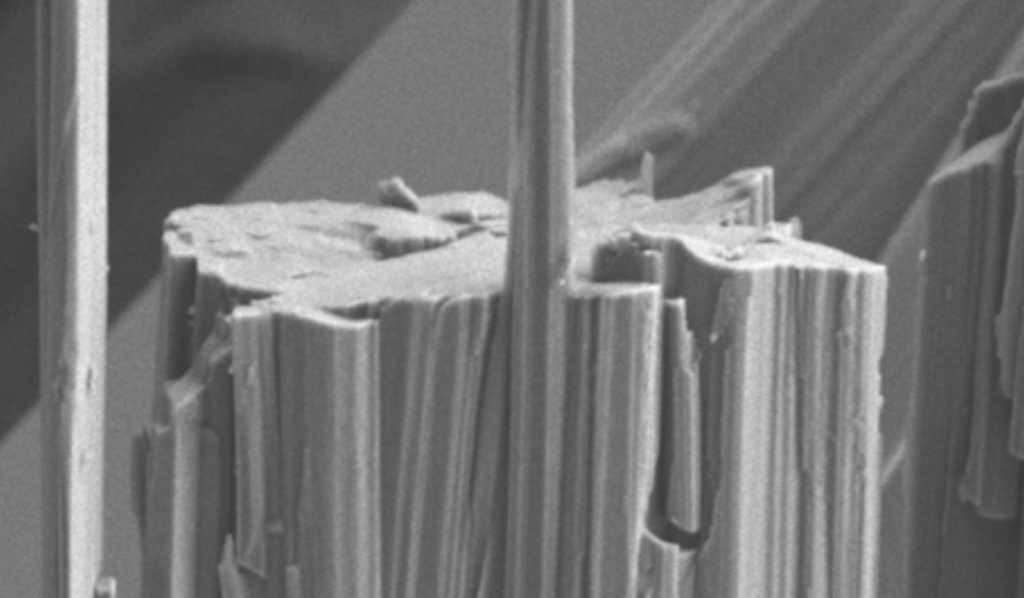
Why are Most Vermiculite Tests for Asbestos Meaningless?
Laboratory tests only look for the six “regulated” asbestos fibers, but not the hundreds of other dangerous asbestos fibers that are not regulated. These fibers are often called asbestiforms. Read here to learn about these other fibers called asbestiforms. For a simpler explanation as to why all vermiculite insulation needs to be treated as asbestos read this article from the University of Hawaii Cancer Center. The article states:
“Roughly 400 minerals arise naturally in a fibrous form. Of these, only six (actinolite, amosite, anthophyllite, chrysotile, crocidolite, and tremolite) are regulated because, at the time when regulations were introduced, these were the only mineral fibres used commercially, based on the assumption that only commercial use could lead to widespread substantial human exposure.”
Francine Baumann, Jean-Paul Ambrosi, Michele Carbone, www.thelancet.com/oncology Vol 14 June 2013
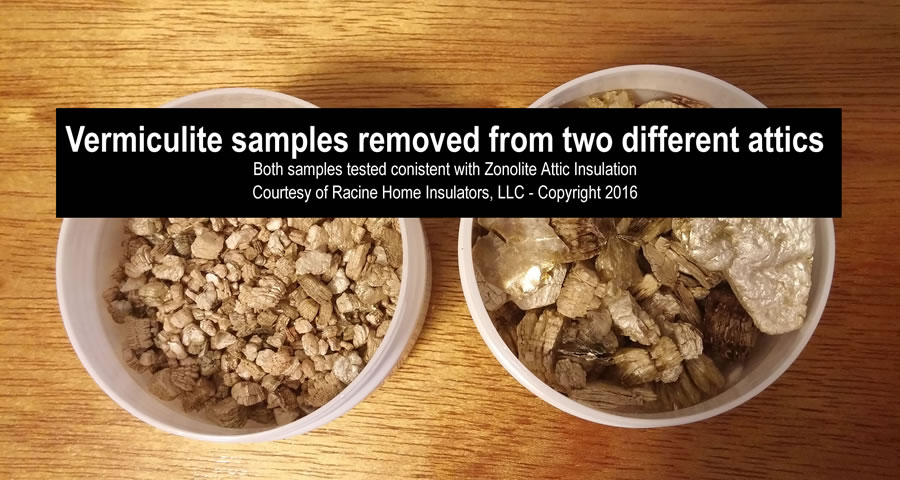
Don’t Waste Time and Money Testing Vermiculite for Asbestos
Due to this confusion and the inability to obtain a meaningful test result, the EPA and most states do not recognize any test results for vermiculite insulation. In fact, vermiculite is the only asbestos-containing material where this is true. Anyone handling or disturbing vermiculite insulation in these states is violating the law unless they are a licensed asbestos abatement company employing certified asbestos abatement workers. All other materials, such as plaster, floor tiles, and pipe wrap insulation can be tested to determine if they can be safely handled. Not so with vermiculite. Read the bulletin shown here from the Wisconsin Department of Health Services website.
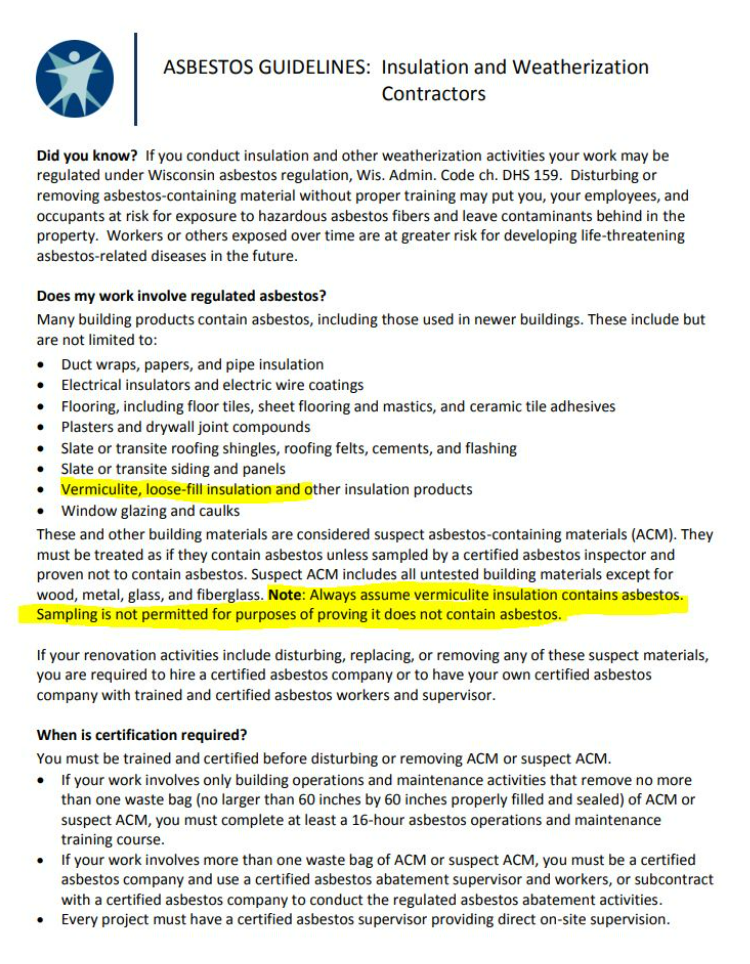
How Can a Vermiculite Lab Test be Wrong?
Official laboratory tests will often give a homeowner a false sense that because the lab could not detect asbestos the material is safe to handle. This is never the case because a testing lab will only look to detect six of the more than 400 known asbestos fibers (asbestiforms). A testing lab does not want to take on liability. They don’t want to make or break a home sale or be the cause of someone putting themselves in harm’s way. They consider asbestos to only be the governmentally “regulated” asbestos fibers, not the other 400 asbestos fibers. It is simply a matter of the definition of the word asbestos. As a result, lab testing can NOT determine if vermiculite is safe.
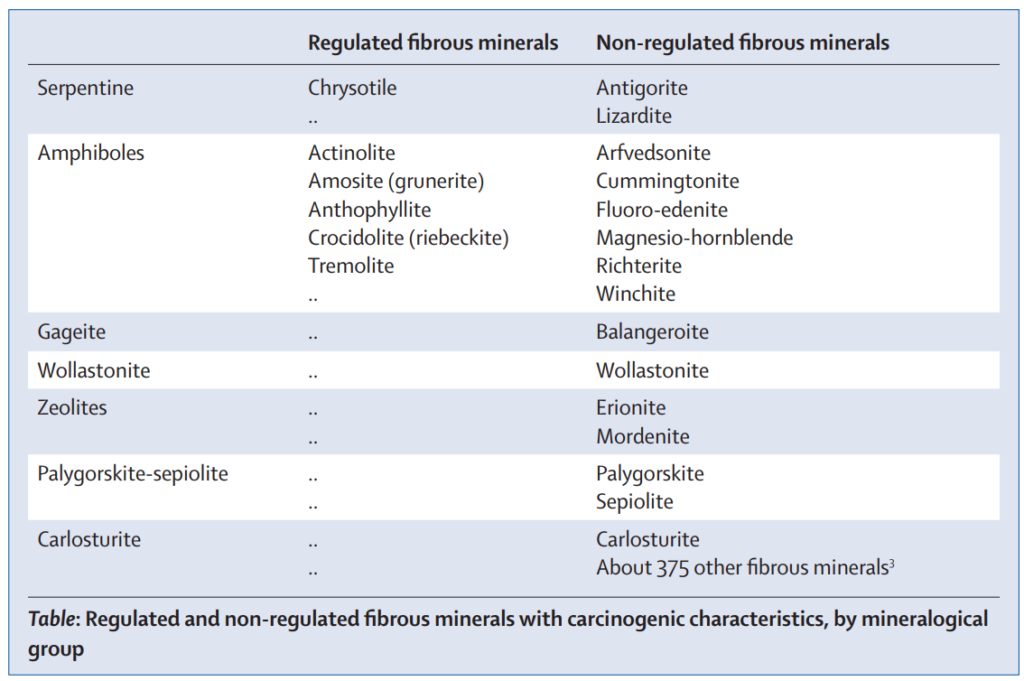
Homeowners and those purchasing a home often want to know if they should leave the vermiculite undisturbed or have it removed. This article is a guide for all who are connected with the ownership, sale, or purchase of a home that contains vermiculite insulation.
About the Featured Photo
The top photo represents a sad reality for hundreds of residents every year. The homeowner wanted to add recessed can lights to his home. He went into the attic with a shovel and started to remove the insulation. After running wires and installing the lights he became curious about the bags of Zonolite insulation still in the attic. The bags were left in the attic when added decades earlier. You can imagine the horror when he Googled the name and learned that he had just likely exposed himself to many hours of dangerous levels of asbestos fibers. Note as numbered: 1) shovel for moving the insulation 2) electricians draw wire 3) kneeling pad 4) recessed can lights installed and 5) unused bags of Zonolite brand vermiculite attic insulation from the 1960s.
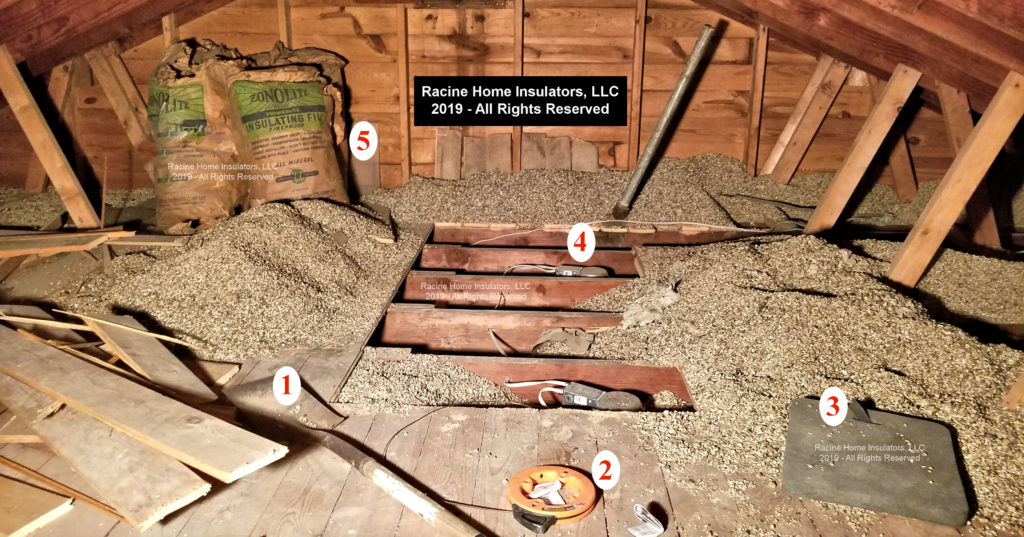
Years Ago Everyone was Purchasing Vermiculite Insulation
Homeowners could purchase Zonolite brand insulation at the local hardware and supply stores. See the advertisement found in a typical newspaper. No mask was worn by the homeowner. No warning that the product contained friable amphibole asbestos was indicated on the bag.
The primary concerns with vermiculite in your home are safety, unexpected expenses, resale value, and high utility costs. While undisturbed vermiculite may not cause an immediate health hazard, one cannot predict when it must be disrupted. The presence of vermiculite can cause a simple repair or home improvement to become a major expense. This is why few people will purchase a home without the seller first removing the vermiculite attic insulation.
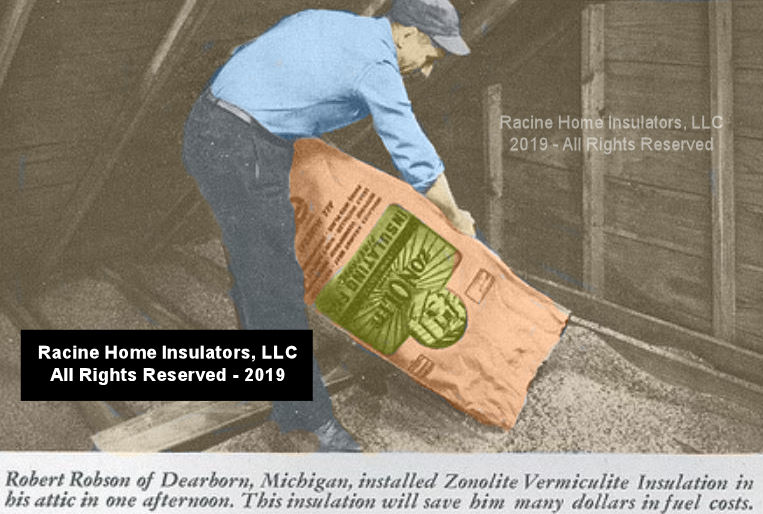
Safety of Home Occupants and Contractors
Asbestos-related diseases are real and television commercials urging those that have been exposed to asbestos to obtain legal advice are common. While billions of dollars have been paid out for asbestos-related health claims, the ZAI Trust settlement exceeds $140 million solely for the removal of vermiculite insulation in U.S. homes. The next time someone tells you vermiculite is not a hazard, ask yourself, “Could $140 million possibly be wrong”?
The asbestos found in vermiculite is extremely friable and is one of the most dangerous types (amphibole) of asbestos. Once vermiculite is disturbed millions of asbestos fibers become airborne.
Home Inspectors Must Find Vermiculite Insulation
It is really a matter of when, not if, the vermiculite will get disturbed. Buyers should not take on this health and financial risk. Roof leaks, installing recessed can lights, moving walls, raising ceilings, basic renovations, adding insulation, and attic air sealing (see below) are common reasons why vermiculite gets disturbed.
If you hire a home inspector, ask them how they will inspect the attic. Will they simply stick their head up the access and look around? Will they crawl the attic and lift the top layers of insulation to see what lies below? Realize that vermiculite insulation is almost always found below more modern types such as fiberglass and cellulose.
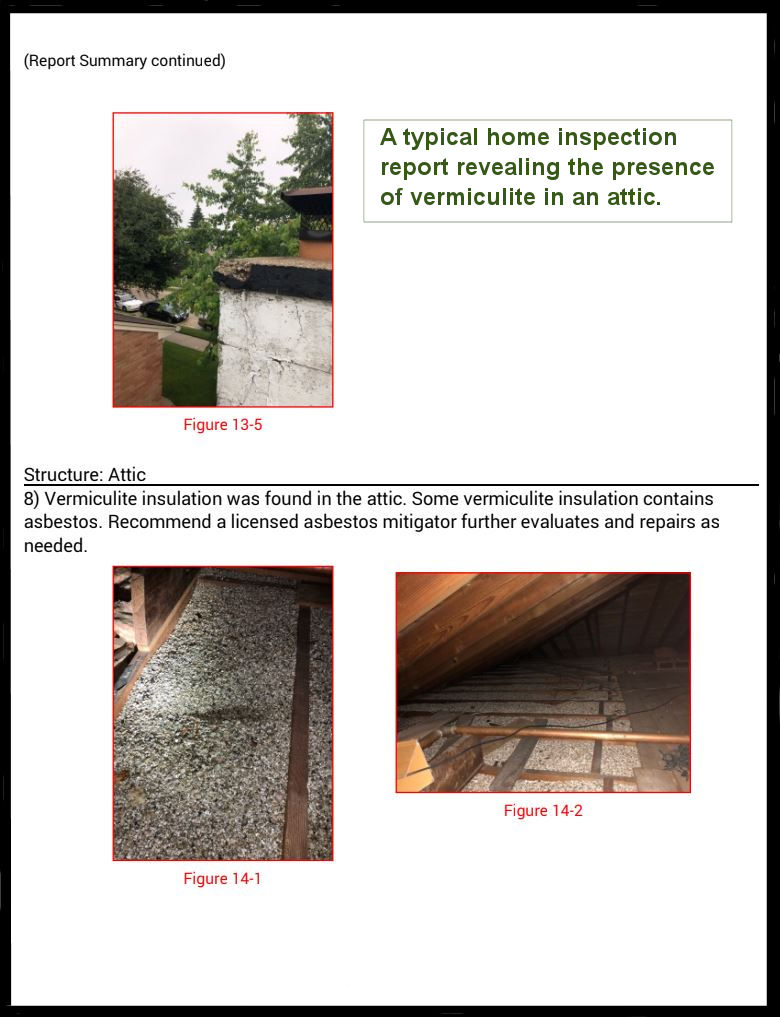
The Resale Value of a Home With Vermiculite
Some misguided contractors claim they can encapsulate vermiculite by blowing additional insulation over it. This is absolutely false as an encapsulation of loose vermiculite can not be achieved by adding cellulose, fiberglass, or even plastic over the top. In fact, these attempts greatly increase the future cost of removing the vermiculite because the new material is in contact with the vermiculite and is now contaminated. As a result, buying a home with vermiculite is buying a liability. And while some buyers may not be concerned about vermiculite, there is a high probability that the next buyer will be.
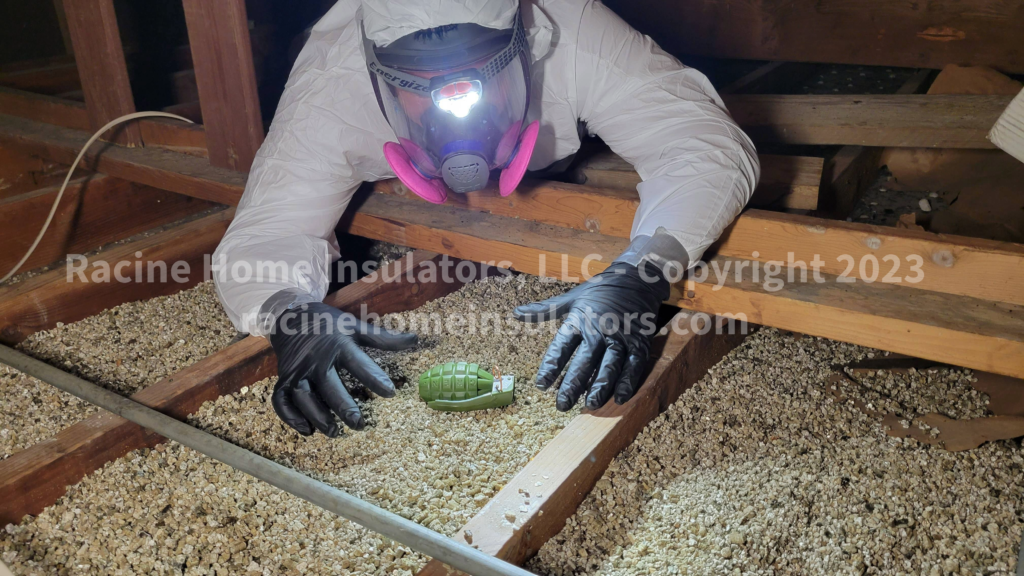
Would You Purchase a Home With a Hand Grenade in the Attic?
Almost all vermiculite contains asbestos and asbestos is a known killer. Unlike a hand grenade that can kill you in an instant, asbestos takes years and usually decades to kill you. Maybe not a big deal if you are 60 or 70, but we have been on too many calls where kids and young adults are involved. In one case an 8-year-old was helping his dad pull down old plaster ceilings. His job was to suck up the vermiculite with a $50 dollar shop vac. In another home 4 and 6-year-olds were playing with toy trucks in a side storage attic filled with vermiculite insulation as if it were a sandbox.
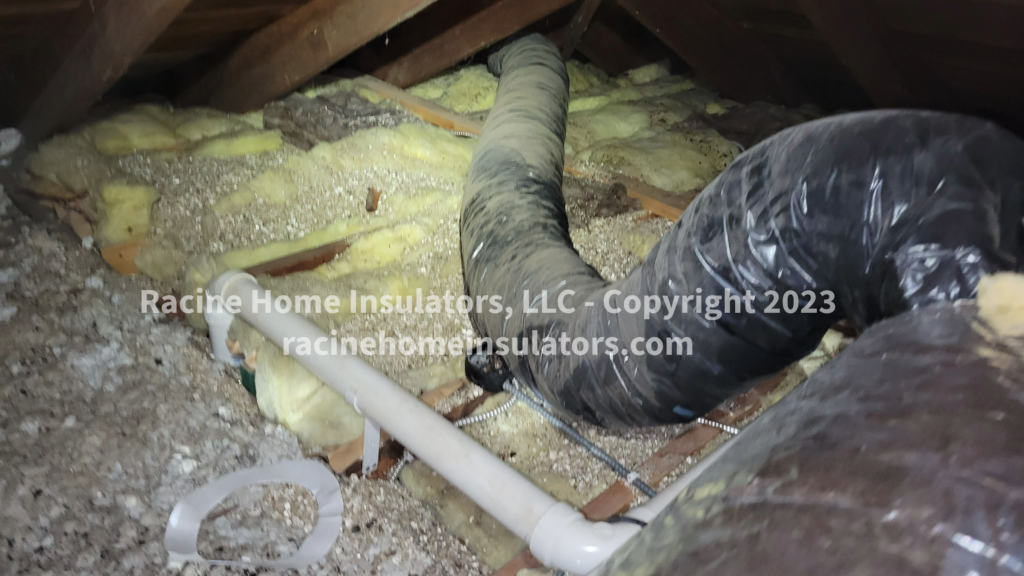
I’ve also been in many homes where an HVAC contractor recently installed an AC system in the attic. Their unlicensed and uninformed employees crawled through an attic full of vermiculite as if it were cellulose.
The Zonolite Attic Insulation Trust
Currently, the ZAI Trust pays for 55% of the cost to remove vermiculite insulation and 55% of the cost to re-insulate. This money eliminates the additional cost to update an attic that contains vermiculite insulation. These savings can be combined with an additional $1,200 incentive for air sealing that most state energy efficiency programs offer (such as Wisconsin’s Focus on Energy program). The total savings now exceeds $6,000 and in most cases pays for over 60% of the total cost. Fortunately, most realtors and home inspectors are now properly identifying vermiculite and informing their clients of the proper next steps.
Future Heating and Cooling Costs
In the long term, it always costs more to leave vermiculite in place, regardless of health and safety. An attic with vermiculite insulation is an inefficient attic that will cost the owner several hundred dollars more per year in heating and cooling costs. The issue is not just replacing vermiculite with a better type of insulation, such as cellulose. Equally important is the need to “air seal” the attic plane after the vermiculite is removed and before the new insulation is blown in. The step of air sealing the attic plane has been a building code requirement for new construction homes for almost 20 years. You simply can’t air-seal an attic properly without first removing all of the granules of vermiculite that are covering the attic floor. Read more about attic air sealing.
